Several years back, my cousins visited me after my invitation, no such big reasons though. We, siblings, funned and gossiped that truly knew no bounds.
Meanwhile, I noticed the internet was running unacceptably slow on my computer, whereas it was pretty smooth on their devices- mobiles and laptops.
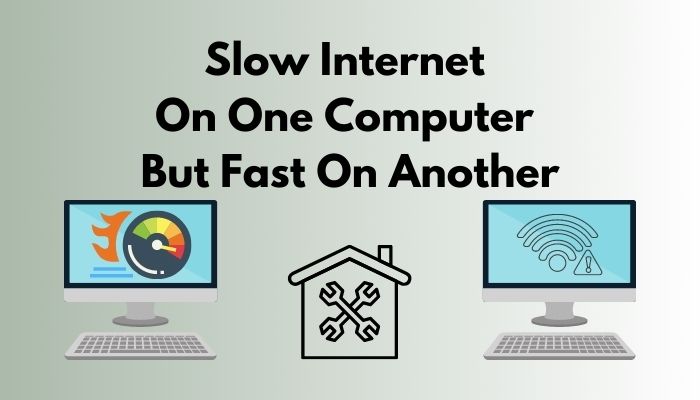
Don’t know why, my ecstatic face turned pale within a second. Also felt worried if there was anything severe with my computer.
Well. Have you ever experienced the same when the internet runs slow on one computer but fast on another? If so, no worries.
Then, it took me one whole week to fix the issue. But now, as a tech expert, I can list down a number of potential solutions that will take no time to heal your annoyance.
So, let’s start.
Why does my Internet Vary from Devices?
When I first realized the problem that my internet speed varies from devices, I started researching it profoundly and ultimately could fix the issue at the soonest.
That’s the reason I think I would be the best fit who has hands-on experience on exactly the same issue. So, please read the entire article carefully.
Well. All the users know the internet shows different speeds on devices, but if they ask why it is happening, someone has to dig the soil to the roots. And that is the most twisted and interesting part of this discussion.
I do not believe anything happens without reason, and this issue is not an exception to that. So, let’s focus on the causes and catalysts that allow the problem to take place.
But, before that, you should make sure if your internet acts faster on one and slower on another.
Also, check out our separate post on fix slow Internet Windows 11.
How can you test your internet speed?
Any user can easily check their internet speed using any of the authentic online tools. I would suggest using speedtest.net, fast.com, speedcheck.org, etc., for the best and most accurate results. They will specify your upload and download speed with your service internet provider and location.
If you notice significant discrepancies between the two readings from two devices, then there is something definitely wrong with the internet speed on your device. So, before getting into the fixes, let’s have a look at what can be the reasons for this.
Here are the reasons for slow internet on one computer and faster on another:
- Malware Infection: If any virus, malware, spyware, or ransomware attacks your computer, it may compromise your internet speed. Without your consent, those can send thousands of emails, drip information and totally slow down your system.
- Corrupt TCP: When your TCP/IP stack gets corrupted, it can cause you a sluggish internet speed. However, it occurs rarely but creates major issues in your device.
- Problematic Applications: Lots of users have this mania to download and install every app or software he meets with. In some cases, the apps unnecessarily burden the CPU and consume the disk and memory space. That impacts as a whole and eventually slows down your internet speed.
- Outdated Drivers: If you use outdated network drivers on your computer, that can be a substantial cause behind the speed disparities among your devices. So, make sure you update them on time.
- Windows Update: Windows, as an operating system, uses more or less 20% of your network bandwidth just to update Windows files and some system applications. This induces an additional load for mid-bandwidth users while using the internet, though you can disable the feature until you turn it on.
The facts I stated above are held the most accountable to vary your internet speed from one computer to another. Still, some other points like the router’s distance from your device, free VPNs, inappropriate network settings can also play a critical role here.
Read more on how to Fiber vs. Copper Internet Which One is Better.
How to Fix a Computer with Slow Internet Connection?
The internet speed issue is nothing new for users. Therefore, I explored and accrued a number of solutions that can heal you with this. If your connection is as slow as molasses, consider the methods I am going to list down below. I Hope, they will immediately settle down your issue.
Here are the methods to fix slow internet on one computer, but fast on another:
1. Change the Device Position
The strength of the network or signal largely depends on the distance between the source and the device that is to be connected. Every router or modem has certain ranges that vary with its price.
In most cases, users place their router at the corner sides of their home, and thus, a computer or mobile located at the skirt of the range suffers badly from a weak signal. The more the distance, the less the internet speed. Moreover, the objects and the appliances at your housework as deterrents to the signal.
Therefore, I recommend you use a router that covers your entire house and install it in the middle of your place. Thus, you can enjoy fast internet on each of your devices.
Check out the easiest way to fix Internet disconnects when downloading large files.
2. Update Network Drivers
Continuously using outdated network drivers is also a cause of slower internet. So, you should install the updated versions of them if available.
Here are the steps to update network drivers on your computer:
- Open the Run
- Type msc in the search box, and hit Enter. The Device Manager window will open.
- Navigate to the Network adapters from the list.
- Click on the downward arrow on the left to expand the directory.
- Right-click on each driver and click Update driver.

- Tap on Search automatically for updated driver software.
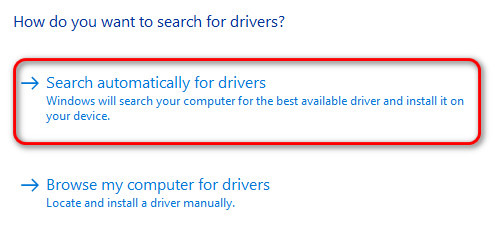
- Wait till the update finishes.
- Repeat the same for all drivers available there.
- Restart your computer and check if the internet speed increases.
3. Restart Network Adapter
Sometimes, problems occur with your network adapter. For your information, a network adapter is a hardware component that enables the computers to connect with a wireless network. So, issues with it surely slow down your internet speed. Here, you do not need to do anything complicated; just restart it.
Here are the steps to restart the network adapter:
- Open the Run
- Type msc in the search box, and hit Enter. The Device Manager window will open.
- Navigate to the Network adapters from the list.
- Right-click on the adapter. A dropdown will show up.
- Click on Properties. A new window will open.
- Navigate to the Advanced tab at the top.
- Scroll a bit down in the Property
- Locate Speed & Duplex from the options.
- Set the Value to Auto Negotiation.
- Click OK to save changes.
- Open Control Panel.
- Go to Network & Security, and then Status.
- Tap on Change Adapter Options.
- Right-click on the adapter, and go for Disable.
- Enable it after a while.
Please, let me know if it worked.
4. Uninstall Unnecessary Applications
Installing unnecessary applications poses an extreme burden as well as a threat to the CPU. Thus, your internet experience may suffer gravely. So, uninstall all of them right away.
Here are the steps to uninstall unnecessary applications:
- Open Control Panel.
- Go to Programs and Features. You will receive the list of all applications currently installed on your computer.
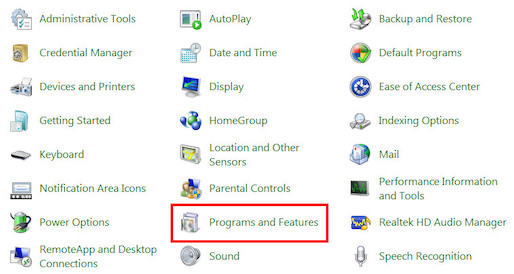
- Click on the app that you think is unneeded.
- Tap on the Uninstall button next to Organize.
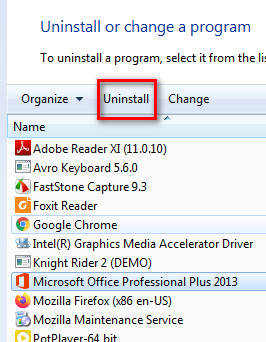
- Give the necessary permissions required to uninstall it.
- Perform the same process for other apps.
When you are done, have a fresh restart of your computer. Then, check if the problem gets solved.
5. Reset TCP/IP Stack
The internet works slow on one computer and faster on another due to a corrupt TCP/IP stack. Though this happens rarely, there is still a possibility of this occurring.
Here are the steps to reset the TCP/IP stack:
- Open the Command Prompt. For this, go to Start and type cmd in the search bar.
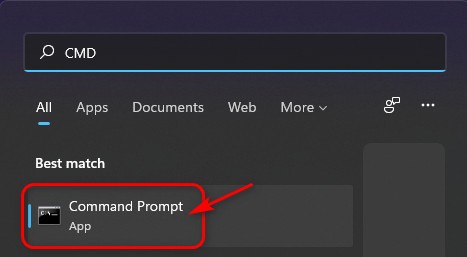
- Hit Enter.
- Type netsh int ip reset c:\resetlog.txt in the prompt.

- Press Enter.
Now, restart your PC for better results.
6. Stop Windows Auto-tuning
Auto-tuning is a Windows 10 feature that often intervenes in your internet connection and eventually makes it suffer. So, better to stop this feature to avoid issues.
Here are the steps to disable the auto-tuning feature on Windows:
- Open the Command prompt.

- Type netsh interface tcp show global in the window and press Enter.

- Find Receive Window Auto-Tuning Level in the list, and check if it is enabled.
- Paste netsh int tcp set global autotuninglevel=disabled and hit Enter.
Now, the auto-tuning feature on your Windows system is on a halt. I recommend you restart your computer to let the changes take place.
7. Check Bandwidth Settings
A considerable portion of your bandwidth may be consumed by OS updates, system file updates, and tons of other ways. This happens solely in the backend and without any notification. So, you should limit this.
Here are the steps to check and control the bandwidth settings:
- Find the Local Group Policy Editor application in your Windows and open it.
- Go to Computer Configuration, then Administrative Templates.
- Go to Network and QoS Packet Scheduler.
- Double-click on Limit reservable bandwidth. You can locate it on your right.
- Choose the option Enabled.
- Set the Bandwidth limit to 0.
- Click on Apply and then OK to save changes.
Now, you can save lots of bandwidth from wasting unknowingly.
Conclusion
Now, I think you have it. The methods I documented here are unlikely to fail. Still, if you remain unsuccessful in getting your internet speed back on your computer, comment down the box below; I will get back to you soon.
And, if you found the guide helpful, please, feel free to share it with others.





Hi Steven, I have been pulling my hair out trying to fix my internet speed. I have a ROG zenith 2 extreme alpha MoBo with a built in intel AX200. I am throttled at around 16 mbps. I have tried 2.4g, 5g and even my ethernet cable. I have ran Malwarebytes, Avast and Spybot to see if i am infected. but nothing. my router and 3 other computers in the house will speed test at over 200mbps (thats what i am paying for). Today i purchased a netgear nighthawk AXE3000. I installed it and disabled everything else. I still have only around 16mbps. I also followed your article and tried those steps. still nothing. Please do you have any other ideas?
Hello nate,
it’s frustrating to hear about your internet speed issues. Since you’ve tried various troubleshooting steps, including changing routers and following suggestions from an article, it’s advisable to focus on the specific device with the problem. Ensure that your ROG Zenith 2 Extreme Alpha’s Intel AX200 drivers are up to date. Check for any interference or conflicting software on your PC that might be limiting the speed. Also, verify the network settings on your PC, ensuring it’s set to the correct frequency band and not limited in any way